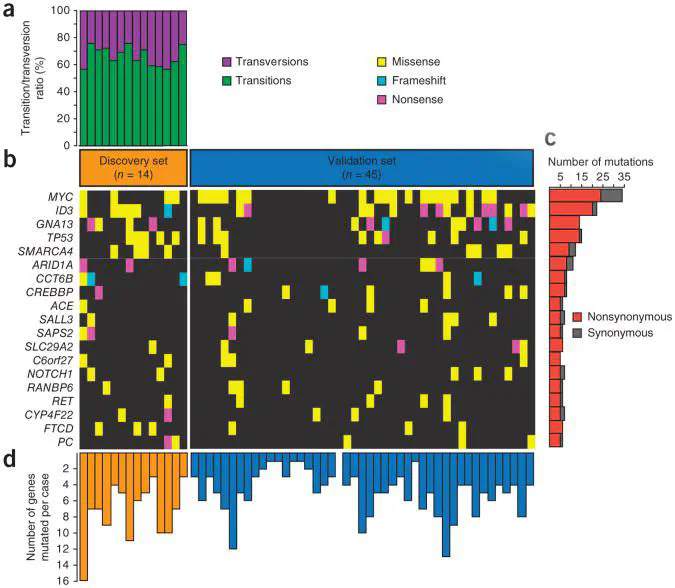The genetic landscape of mutations in Burkitt lymphoma
Apr 7, 2012·,,,,,,,,,,,,,,,,,,,,,,,,,,,,,,·
0 min read
Cassandra Love
Zhen Sun
Dereje Jima
Guojie Li
Jenny Zhang
Rodney Miles
Kristy L Richards
Cherie H Dunphy
William W L Choi
Gopesh Srivastava
Patricia L Lugar
David a Rizzieri5
Anand S Lagoo
Leon Bernal-Mizrachi
Karen P Mann
Christopher R Flowers
Kikkeri N Naresh
Andrew M Evens
Amy Chadburn
Leo I Gordon
Magdalena B Czader
Javed I Gill
Eric D Hsi
Adrienne Greenough
Andrea B Moffitt
Matthew McKinney
Anjishnu Banerjee
Vladimir Grubor
Shawn Levy
David B Dunson
Sandeep S Dave
 Image credit: Unsplash
Image credit: UnsplashAbstract
Burkitt lymphoma is characterized by deregulation of MYC, but the contribution of other genetic mutations to the disease is largely unknown. Here, we describe the first completely sequenced genome from a Burkitt lymphoma tumor and germline DNA from the same affected individual. We further sequenced the exomes of 59 Burkitt lymphoma tumors and compared them to sequenced exomes from 94 diffuse large B-cell lymphoma (DLBCL) tumors. We identified 70 genes that were recurrently mutated in Burkitt lymphomas, including ID3, GNA13, RET, PIK3R1 and the SWI/SNF genes ARID1A and SMARCA4. Our data implicate a number of genes in cancer for the first time, including CCT6B, SALL3, FTCD and PC. ID3 mutations occurred in 34% of Burkitt lymphomas and not in DLBCLs. We show experimentally that ID3 mutations promote cell cycle progression and proliferation. Our work thus elucidates commonly occurring gene-coding mutations in Burkitt lymphoma and implicates ID3 as a new tumor suppressor gene.
Type
Publication
Nature Genetics